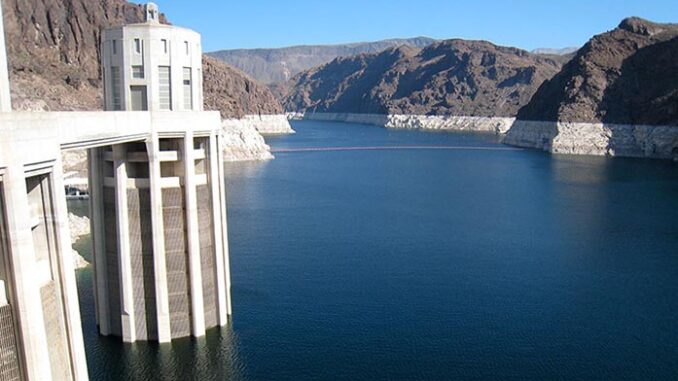
WASHINGTON – Two weeks after water officials told Congress there was “urgent” need to approve the Colorado River Drought Contingency Plan, the House and Senate both passed a plan Monday and sent it to the president’s desk.
If signed by President Donald Trump as expected, it would be the culmination of years of negotiations between seven states in the Colorado River basin on how much each state can draw from the river if Lake Powell and Lake Mead drop to crisis levels.
The votes came in rapid succession Monday evening, with little debate and each chamber approving the measure by acclimation.
“This immediate action is essential to preserving the water supply for millions of people in the American Southwest,” Rep. Raul Grijalva, D-Tucson, said on the House floor before the vote.
House and Senate versions of the Colorado River Drought Contingency Plan Authorization Act are identical: Both require that the Interior secretary authorize the water allocation agreement hammered out by the seven basin states. That deal is designed to prevent a potential water crisis and settle disputes over who gives up water if the river reaches a crisis level.
For Arizona, that means that once Lake Mead levels fell below a certain point, the state would lose access to 192,000 acre-feet a year that it can now pull from the river. An acre-foot is the amount of water needed to cover an acre of land that is one foot deep, or 325,853 gallons.
The plan’s backers note one primary goal is to prevent those drops in reservoir levels from ever happening by requiring states to cede less water but at an earlier point.
Sen. Martha McSally, R-Arizona, praised her fellow lawmakers for acting quickly to pass the legislation.
“We just introduced this legislation last Tuesday,” she said on the Senate floor Monday. “But by acting so quickly, the lower basin states will be able to immediately begin saving hundreds of thousands of acre-feet of water.”
Tom Buschatzke, director of the Arizona Department of Water Resources, who last month urged Senate and House committees to move swiftly on the agreement, welcomed Monday’s votes.
“The last few weeks have been one of the most extraordinary periods in the history of ADWR and was a remarkable chapter in the long story of securing Arizona’s water supplies,” Buschatzke said in a statement.
“I’m grateful that Congress has approved the bipartisan Colorado River Drought Contingency Plan Authorization Act, which will enable the seven Colorado River Basin States to keep Lake Mead from falling to critically low levels,” his statement said.
Like others, Rep. David Schweikert, R-Fountain Hills, welcomed passage of the bill. But he also said on the House floor that he “wanted to add a little caveat that we understand the work isn?t done.”
“This legislation does not lay out every last step that those of us in Arizona must do,” Schweikert said. “We are going to have to step up and meet our obligations, and I think that’s important we understand there is much work left to be done.
[metaslider id=65385]
Grijalva echoed Schweikert and said “the job is not done, there is much to do,” noting that the current plan would only last until 2026, when it will have to be renegotiated..
“It is not an infinite resource, water, it is a finite resource and we need to treat it that way,” Grijalva said.
Rep. Rob Bishop, R-Utah, said the state’s should be recognized for hammering out the deal that Congress only had to approve.
“This is a totally unique bill,” Bishop said. “What we have done is let the seven affected states get together and work out a solution and bring it to us, and we in Congress didn’t screw it up too bad.”
